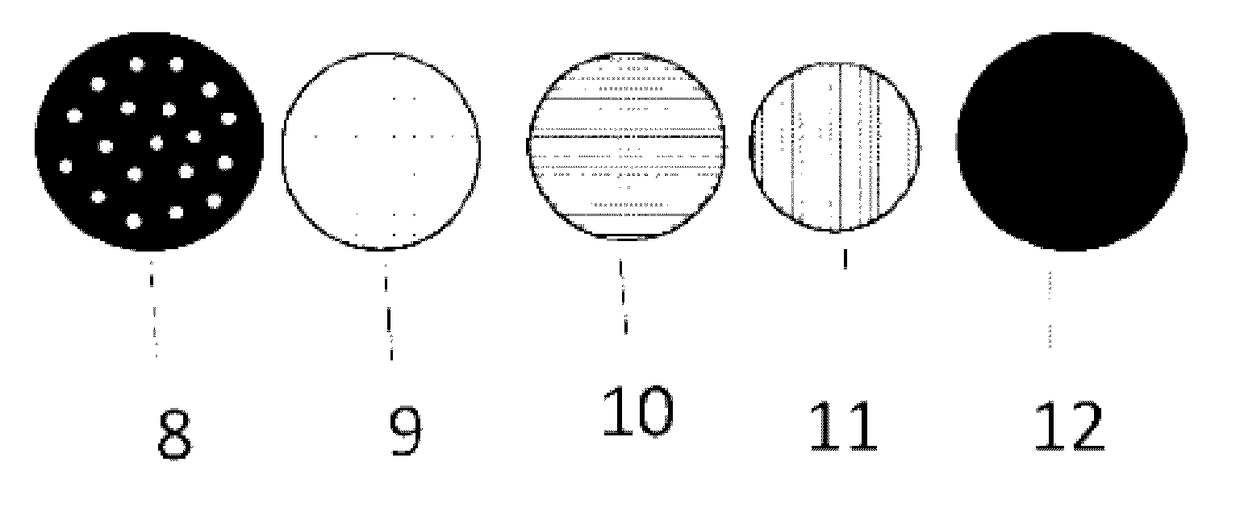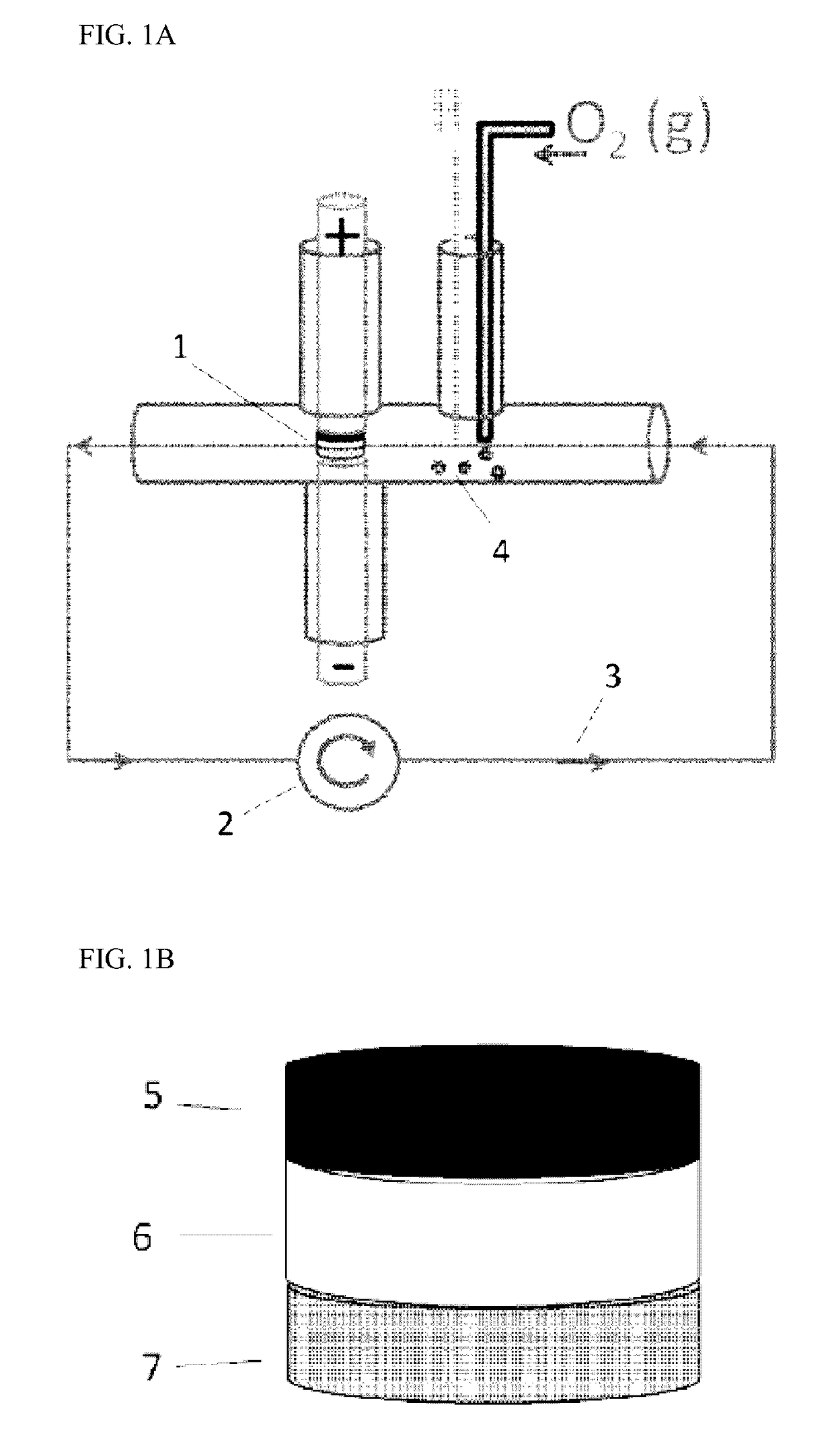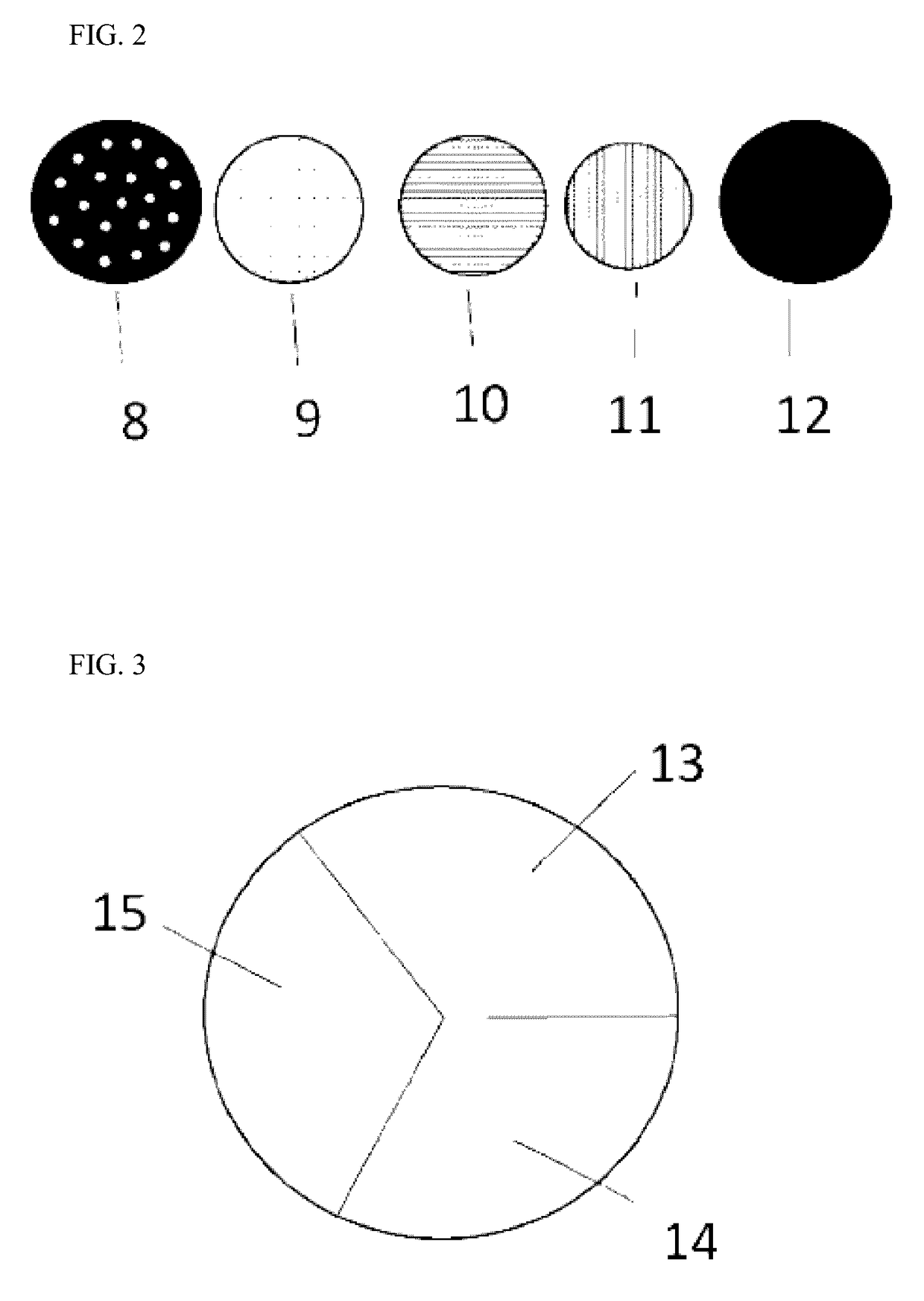Lithium-Air Battery
a battery and lithium-air technology, applied in batteries, organic electrolytes, electrical equipment, etc., can solve the problems of low energy efficiency, hysteresis and decomposition of electrolyte, etc., and achieve stable reversible cycling performance, high coulombic efficiency, and high charging potential
- Summary
- Abstract
- Description
- Claims
- Application Information
AI Technical Summary
Benefits of technology
Problems solved by technology
Method used
Image
Examples
Embodiment Construction
[0040]To produce the oxygen electrode, a hydrophobic gas diffusion layer (for example Toray TGP-H-030) was coated with a slurry comprising 80 percent by weight of conductive carbon (for example Super P®, Timcal) and 20 percent by weight of polyvinylidene fluoride (PVdF) (Solvay) dispersed in N-methyl-2-pyrrolidone (NMP) using a laboratory coating knife. The final carbon loading was about 1.0+ / −0.1 mg cm−2. The coated gas diffusion layer was then dried at 100° C. under reduced pressure for 12 hours. Button cells (for example of the R3032 type) were assembled under an argon atmosphere in a glove box. The lithium metal anode and the oxygen electrode were separated by a sheet composed of glass fibers (for example from Whatman) which had been impregnated with PYR14TFSI-LiTFSI (in a molar ratio of 9:1) as the electrolyte.
LIST OF REFERENCE SYMBOLS
[0041]R Reference electrode[0042]1 Electrochemical cell[0043]2 Peristaltic pump[0044]3 Electrolyte ((PYR14TFSI):LITFSI in a ratio of 9:1)[0045]4 ...
PUM
| Property | Measurement | Unit |
|---|---|---|
| temperature | aaaaa | aaaaa |
| electronically conductive | aaaaa | aaaaa |
| electronically non-conductive | aaaaa | aaaaa |
Abstract
Description
Claims
Application Information
 Login to View More
Login to View More - R&D
- Intellectual Property
- Life Sciences
- Materials
- Tech Scout
- Unparalleled Data Quality
- Higher Quality Content
- 60% Fewer Hallucinations
Browse by: Latest US Patents, China's latest patents, Technical Efficacy Thesaurus, Application Domain, Technology Topic, Popular Technical Reports.
© 2025 PatSnap. All rights reserved.Legal|Privacy policy|Modern Slavery Act Transparency Statement|Sitemap|About US| Contact US: help@patsnap.com



